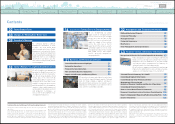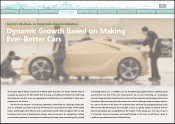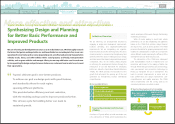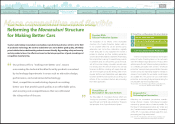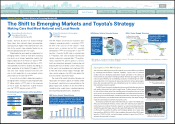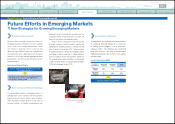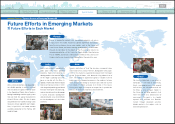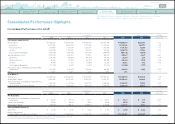Toyota 2012 Annual Report Download - page 13
Download and view the complete annual report
Please find page 13 of the 2012 Toyota annual report below. You can navigate through the pages in the report by either clicking on the pages listed below, or by using the keyword search tool below to find specific information within the annual report.
Management and
Corporate Information Investor Information
Changes for Making
Ever-Better Cars
Toyota Global Vision Business and
Performance Review Financial Section Special FeaturePresident
ʼ
s Message Medium- to Long-Term
Growth Initiatives
TOYOTA ANNUAL REPORT 2012
More competitive and flexible
Toyota is undertaking
monozukuri
(conscientious manufacturing) structure reforms in the eld
of production technology. We work to make better cars and to deliver good quality, affordably
priced vehicles that are both exciting and environment-friendly. By providing safety and security
we bring smiles to faces. Our efforts are based on the twin perspectives of good carmaking and
competitive manufacturing.
Our primary effort, “making ever-better cars”, means
overcoming the technical hurdles faced by products conceived
by technology departments in areas such as attractive design,
performance, and environmental technology.
Next, competitive manufacturing depends on making
better cars that provide good quality at an affordable price,
and ensuring cost-competitiveness that can withstand
the rising value of the yen.
Toyota’s Medium- to Long-Term Growth Initiatives
Ⅱ: Innovation in production technology
Reforming the
Monozukuri
Structure
for Making Better Cars
The foundation of our reforms of the
monozukuri
structure is the Toyota Production System, which is
in our corporate DNA. This can be summed up by
automation and Just-in-Time. Automation originally
meant being able to stop equipment the instant a
problem is detected, and then restarting production
once the abnormality had been dealt with. We are taking
this a step further by aiming for manufacturing in which
no problems arise and only perfect goods are made.
Just-in-Time means making only what is needed, when
it is needed, and in the amount needed. This cuts lead
times and is effective in dealing with supply chain risk.
Just-in-Time requires production leveling, which in turn
requires
takt
time and standardized work approaches
to achieve uniformity in production process timing. Our
reforms of the
monozukuri
structure are proceeding
from these approaches.
“One-by-one production” is based on our longtime
policy at Toyota of building based on the customer’s
order for individual output production. “Produce at the
optimum speed for sale” is based on placing importance
on correlating production with demand. “Small-scale
production” means producing via a small structure when
demand is low, and responding rapidly to increases in
demand. To accomplish this we created a small, simple
and scalable line. The goal is low-cost, small-volume
production, and reaching that goal requires raising the
net yield rate* and the net operation rate.
Toyota’s DNA:
Toyota Production System
The three pillars of
monozukuri
structure reform are
“one-by-one production,” “produce at the optimum
speed for sale,” and “small-scale production.” These are
vital principles of the Toyota Production System.
Reforming our
monozukuri
(conscientious manufac-
turing) structure requires technological innovation
unbound by general notions of what is possible. The
four keys to technological innovation are “simple and
slim,” “variable models in variable volume,” “net shaping”
(of the TPS 7
muda
, helps eliminate waste from over-
processing), and “high added value.“
Three Pillars of
Monozukuri
Structure Reform Keywords for
Technological Innovation
*Net yield rate: The rate of nal output efciency, including items
such as stock utilization, when adding value
Note: The TPS 7
muda
(wastes): over-processing, inventory, over-
production, waiting, motion, transportation and defects
Three Pillars of
Monozukuri
Structure Reform
One-by-one production
1
Small-scale production
3
Produce at the optimum speed for sale
2
Low-Cost, Small-Volume Production
Search NextPrev page 13
Contents
0821







